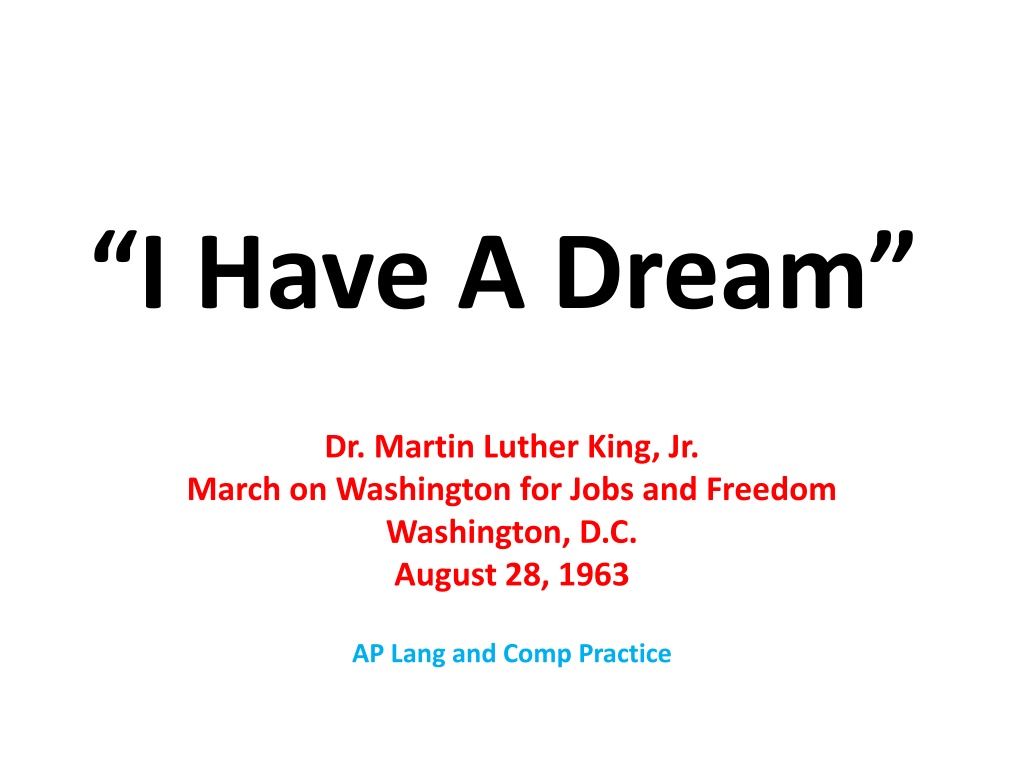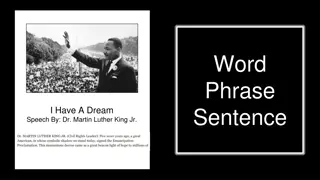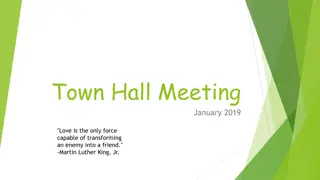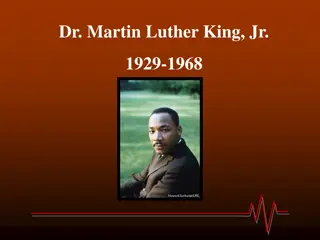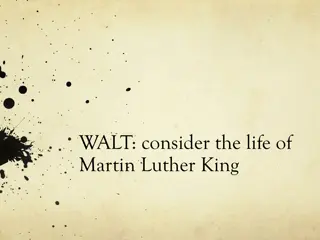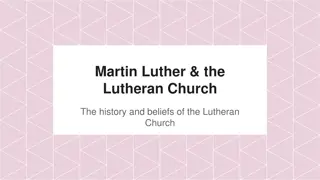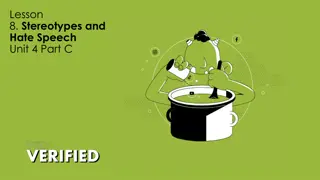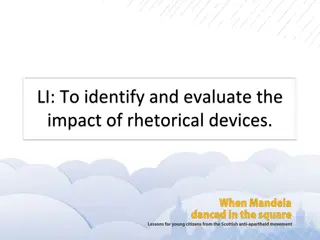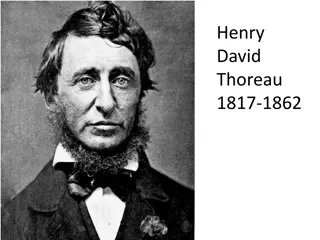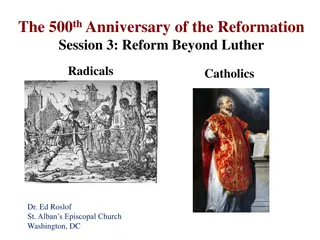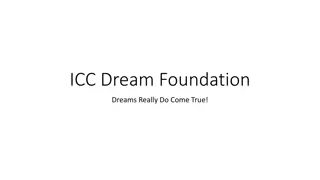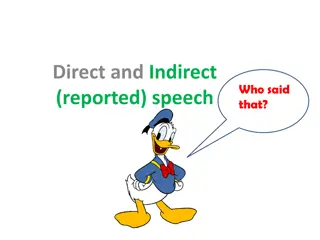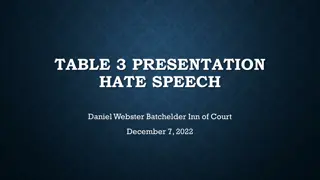Analyzing Martin Luther King Jr.'s "I Have a Dream" Speech
This analysis delves into the powerful rhetoric of Martin Luther King Jr.'s iconic "I Have a Dream" speech given during the March on Washington in 1963. It examines the use of persuasive devices, such as repetition and appeals to ethos, in conveying a message of equality and justice. King's strategic structuring and style aim to inspire change and resonate with his audience, making a lasting impact on civil rights movements.
Download Presentation

Please find below an Image/Link to download the presentation.
The content on the website is provided AS IS for your information and personal use only. It may not be sold, licensed, or shared on other websites without obtaining consent from the author. Download presentation by click this link. If you encounter any issues during the download, it is possible that the publisher has removed the file from their server.
E N D
Presentation Transcript
I Have A Dream Dr. Martin Luther King, Jr. March on Washington for Jobs and Freedom Washington, D.C. August 28, 1963 AP Lang and Comp Practice
Make a Claim giving readers something to react to/ find patterns of meaning that can make the world make more sense about the most dominate rhetorical device used about how King appeals to what or to whom about King s style about King s structure
#1 Claim & Warrant giving readers something to react to/ find patterns of meaning that can make the world make more sense In paragraph two, King enhances the feeling of inequality as he notes the lack of progress made within the 100 years since the Emancipation Proclamation was signed to free slaves. Impact?
# 2 Claim & Warrantabout the most dominate rhetorical device used King uses repetition of the phrase one hundred years, four times in paragraph three, in order to remind his audience of the little change made to human rights since the abolishment of slavery. Impact?
#3 Claim & Warrant about to what or to whom he is appealing to and how King demonstrates his authority on the subject matter by setting an optimistic tone, saying, I am happy to join with you today, and establishes the credibility of the occasion as the greatest demonstration for freedom in the history of our nation. Impact?
STYLE STYLE is how a speaker or writer says whatever he or she says The style of a work may be analyzed in terms of its: 1. Diction or choice of words 2. The frequency and types of figurative language 3. The structure of its sentences *Are they formally constructed or are they loosely constructed to give a more relaxed conversational effect? 4. The structure of its paragraphs *Are they long and drawn out to provide in-depth information, or are they shorter and to- the- point for easy memory 5. The context of the speaker *SOAPSTone A writer or a speaker usually attempts to adapt his/her style to the subject matter and to the audience to which he/she is addressing
# 4 Claim & Warrantabout Kings style King s speech has the effect of poetry as he uses imagery to exploit the purpose of the Emancipation Proclamation as a joyous daybreak to end the long night of their captivity. Impact?
# 5 Claim & Warrantabout Kings structure King uses juxtaposition in successive paragraphs as he begins with a framework in the former and unfortunate realities in the latter. Impact?
Individual PRACTICE Create a concise paragraph that: Makes a claim about what MLK did in this speech Includes a warrant about how MLK did ____ in his speech Provides an IMPACT about why this matters to whom? to what? why? because of?
Make a Claim giving readers something to react to/ find patterns of meaning that can make the world make more sense
Make a Claim about the most dominate rhetorical device used
Make a Claim about how King appeals to what or to whom
Make a Claim about King s style
Make a Claim about King s structure
